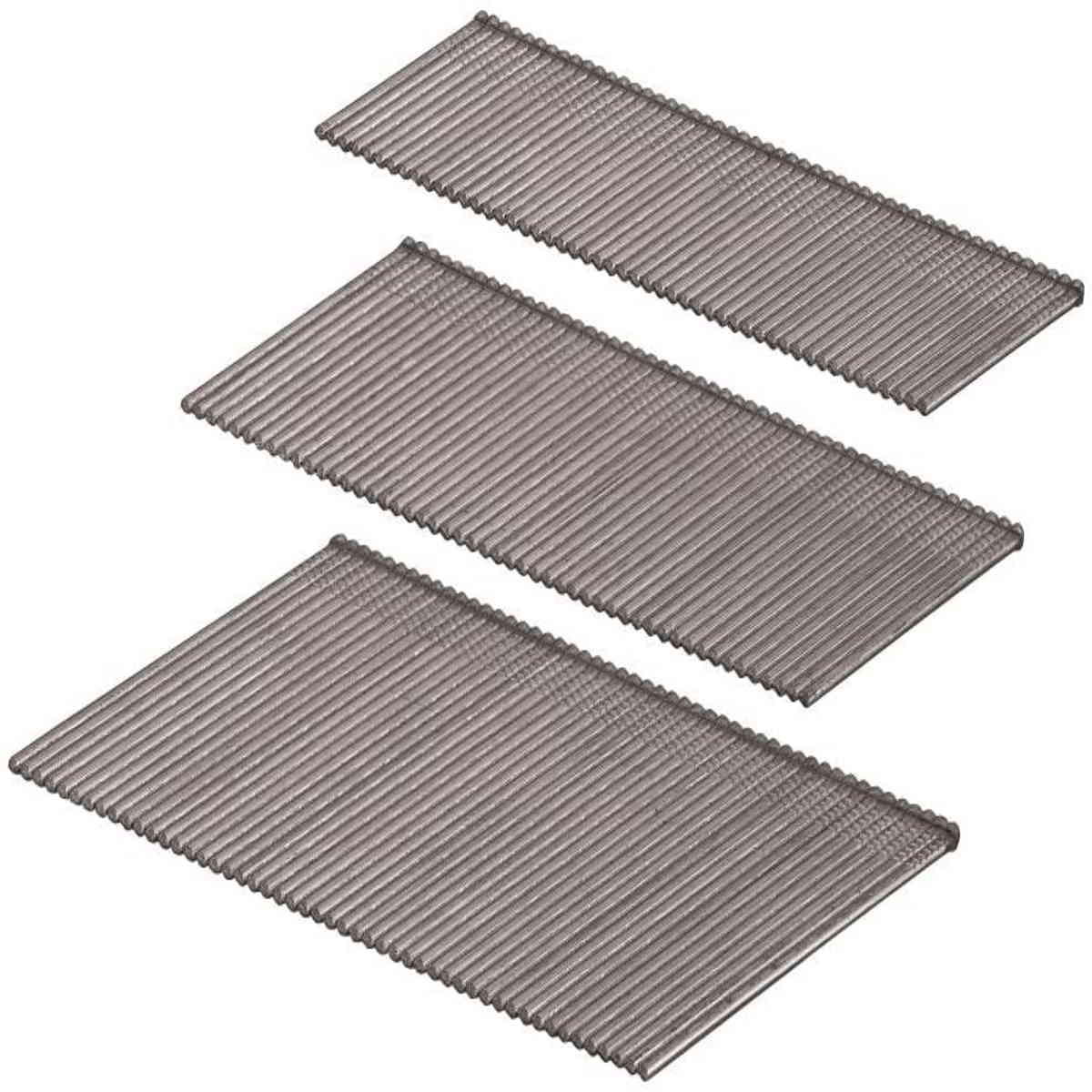As an Amazon affiliate, we may earn a small commision from qualifying purchases.
As a follow up to our recent 15 Gauge Vs 16 Gauge Finish Nailer write-up, we shall look at the key differences between 15 gauge nails vs 16 gauge nails in this article.
Combined, these two articles should help you make two important decisions:
- The best finish nailer to use for your projects
- The best finish nails to use for finish work (Hint: each nail is fired by a specific type of nailer so if you choose the nails correctly, then you won’t have a problem selecting the right type of finish nailer)
Let’s dive in:
15 gauge nails vs 16 gauge nails- Which way should you go?
To open our 15 gauge nails vs 16 gauge comparison, let us speak about the most notable differences between their features:
The size(gauge)
In terms of diameter, the 15 ga nail diameter is 0.0720 Inches.
What about the 16 -ga nail diameter? It comes to about 0.0625 Inches.
So there’s a noticeable difference when it comes to the diameters.
The head
One major reason that makes 15 ga nails the best choice for more structural applications is the head..
Now, 15ga nails have a more fuller head – which means better holding power- than 16 ga nails and are hence more suited to projects that need more holding strength(large trim jobs, hanging doors, etc).
Let us get this clear from a negative angle:
15-ga nail heads are rounder (thus they tend to leave larger holes that you could then need to patch).
There’s definitely also a significantly higher likelihood of splitting your wood with 15 ga’s.
On the other hand, 16-ga nails heads have a noticeably smaller square profile so they leave a tiny hole(that may not need filling).
Can you now see why painters always seem happier with 16 ga finish nails than 15 gauge?
The truth is the marks from 16-ga’s are small enough to just leave them (there’s no need for putty, for the most part).
The length
Overall, 15 ga nails you will find most commonly in the market are typically between 1-1/4” and 2-1/2” long.
On the other hand, 16 ga nails – and these are more easily found in shops than 15 ga nails- are typically from 3/4” to 2-1/2” inches long.
A word on 15-ga nailer
Did you know that traditionally 15-ga finish nailers have an angled stack? If you don’t, that is a fact.
Guess why?
Well, it is because of what we have just talked about above: these nailers have to be angled since 15-ga nails feature a larger head (so they must be shaped in a way that makes it easy for you to get into tight places).
I should add that some manufacturers have released angled versions of their most popular 16-ga finish straight nailers perhaps due to more people asking for them over the years (These include Dewalt and Milwaukee)
15 gauge nails vs 16 gauge nails- The projects each is ideal for (examples)
In relation to the projects each works best for- and this is what most of you want to know- the general rule is:
Use 15 ga nails for anything that needs more strength (items that move a lot) and 16 ga nails for light finish works.
To point you in the right direction, here are a couple of examples of these projects:
Door frames – the 15 gauge is better.
That is door installs, and for the most part, ¾ material when you’re nailing through drywall such us on the outside edges of casing.
15ga finish nails are also recommended for sturdy installation of door jambs, especially heavy, solid-core doors.
And yes, there is nothing better than 15 gauge angled nails for siding, exterior trim (and, in general, very heavy trim jobs).
I should add that the nails are typically galvanized (for outdoor applications) and the shape of the nail is different on the sharp
Light interior trim and smaller baseboards (most interior decorative boarding)
16 gauge is going to suffice for such.
Remember the holes are pretty small and may not need fixing.
Rule of thumb
Here is a helpful general rule:
You want to use 15 gauge when affixing 3/4″ and all thicker materials securely including thicker base and basically anything that undergoes a lot of movements and 16 gauge for anything below 3/4″.
Put another way, use 16 ga finish nails for any project where it is desirable to have a nail with smaller head ‘footprint’.
Final words
Overall, the 15ga nails are best used for siding and most exterior works due to their superior hold as they’re fatter and have a fuller head (use it for all heavy-duty stuff!).
The 16ga nail, is, on the hand, ideal for interior woodworking because the holes they leave are smaller and there is less risk of splitting wood(due to the narrower head).
So, in a nutshell, the best nail gauge totally depends on exactly what you’re intending to do.
PS: Before you decide on the finish nails to buy, you might want to check your local code – some building codes need you to use particular finish nails for specific projects and you don’t want to go against that.

